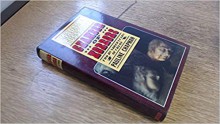
I received a copy of this paperback from Pen & Sword History and I freely chose to review the book.
This is another great book by Pen & Sword that are quickly becoming one of my favourite publishing companies for non-fiction books.
This small volume is packed with information. After a brief introduction that sets the Regency period, particularly how life was for women at the time, the book discusses the lives of twelve women who played an important role in the UK during that period. As the author comments, they were not the only women of note at the time, but they did make a significant difference to Britain, and a difference that survives to this day. They come from all walks of life, their professions or interests are diverse, some were married and had children but half of them never married, and I must confess that although I knew some of them, I had never heard of the others. And I learned a great deal by reading this book even about the ones I was somewhat familiar with.
By now, you must be wondering who these twelve women are.
Chapter 1 is dedicated to Eleanor Coade, whom the author calls ‘the king’s stone maker’, a business woman who took charge of the artificial stone manufactory that bore her name and was very good at creating a high quality product and also at marketing. I had never realised that many of the statues, garden sculptures, and facades of buildings I have visited were made using her stone.
Chapter 2 introduces us to Caroline Herschel, who always keen to assist her brother, became an astronomer of note in her own right (and she discovered many comets).
Sarah Siddons, the actress that lifted the reputation of actresses and well known for her tragic roles, is discussed in chapter 3.
Marie Tussaud, of Madame Tussaud’s fame, is the subject of chapter 4. And although I was familiar with the wax museum, I discovered I didn’t know much about this fascinating woman.
Chapter 5 is dedicated to Mary Parminter, mountaineer, traveller, and benefactress to other women.
Writer and mother of historical fiction Maria Edgeworth is discussed in chapter 6.
In chapter 7 we learn about Jane Marcet, a woman so eager to learn and to help others learn, that she wrote the chemistry for dummies of the period, so that women and people who had not had access to much formal education could understand the subject. She used the format of a dialogue between female students and teacher and also provided examples of experiments that could easily be done at home. Faraday gave her credit for his early steps in science and she was very well regarded and a best-seller of the time.
Chapter 8 is taken up by Sarah Guppy, who was an amateur engineer and although did not always get credit for her inventions she truly deserves to be in this book.
Jane Austen is the subject of chapter 9. Although she died during the period, the author chose to include her. She is probably the most famous woman in the book, and the one I knew more about, but I learned some new things and her chapter is a good introduction to readers who are not familiar with her life, works, and period.
Harriot Mellon had an awful childhood but she went on to become and actress and eventually a banker, and her private bank exists to this day. And her legacy, that found its way into many charitable causes, has also endured.
Elizabeth Fry is perhaps best known for having been on the back of the £5 note for a while. I read about her when I studied Criminology, as she was a big prison reformer, but I did not know about her role in creating a training school for nurses well before Florence Nightingale, and her life is fascinating. She was a truly passionate and generous woman, always devoted to improving the lives of others.
The last woman the author chooses to include is Mary Anning. She was from humble origins but became a great fossilist and her fossils are still on display in many museums today.
Knowles has chosen a fantastic group of women to write about. Her writing style is fluid, easy to follow, and includes both information about the personal lives of these women and about their contributions to the period. These brief biographical chapters are a good introduction to anybody who wants to get some idea about what women’s lives were like at the time, whilst at the same time providing a glimpse into what made these twelve women extraordinary. Their intelligence, their determination, and their passion shine through in those few pages. I must confess I would be happy to read a whole book on any and all of these women.
I recommend this book to anybody interested in women’s history or looking for an introduction into the Regency Period that looks more closely at the role women played. It is a gripping read and I hope it will go some way to help these women get the attention they deserve.


 Log in with Facebook
Log in with Facebook 









